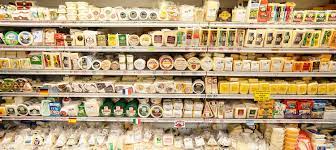Introduction: Europe, renowned for its rich cultural tapestry and gastronomic delights, stands as a bastion of exquisite cheeses that have captivated palates worldwide. The European cheese market is a vibrant tapestry, interwoven with tradition, innovation, and an unwavering commitment to quality. In this editorial, we delve into the diverse and thriving landscape of the European cheese market, exploring its nuances and the factors propelling its continued success.
Diversity of Offerings: One cannot discuss the European cheese market without marveling at its vast array of offerings. From the creamy indulgence of French Brie to the robust flavor profiles of Italian Parmigiano-Reggiano, each country contributes its unique masterpiece to this culinary mosaic. The artisanal craftsmanship that goes into producing European cheeses reflects a profound respect for tradition while embracing modern techniques to meet evolving consumer demands.
Regional Specialties: One of the market’s charms lies in its regional specialties, a testament to the cultural and geographical diversity of the continent. Whether it’s the smoky Gouda from the Netherlands, the piquant Roquefort from France, or the velvety Manchego from Spain, these cheeses are not merely products; they are embodiments of centuries-old traditions and local terroirs.
Sustainability and Quality: European cheesemakers are increasingly aligning with sustainable practices, responding to the growing global demand for environmentally conscious products. From farm to table, the emphasis on quality and ethical production methods is evident. Consumers are not just purchasing cheese; they are investing in a commitment to sustainability and responsible agriculture, enhancing the overall appeal of European cheeses.
Innovation and Adaptability: While tradition forms the backbone of the European cheese market, innovation is the driving force that keeps it dynamic. Artisanal producers and larger enterprises alike are experimenting with new flavors, textures, and production methods to cater to evolving consumer tastes. The incorporation of unique ingredients, such as herbs, spices, and even truffles, adds a modern twist to timeless classics, broadening the market’s appeal.
Global Influence: The influence of European cheeses extends far beyond the continent’s borders. Exported to all corners of the globe, these delectable creations have become integral components of international culinary experiences. The European cheese market’s global reach highlights its adaptability to diverse preferences, making it a cornerstone of the global dairy industry.
Challenges and Opportunities: Despite its robust standing, the European cheese market faces challenges, including shifts in consumer preferences, regulatory changes, and economic uncertainties. However, these challenges also present opportunities for adaptation and growth. Proactive engagement with sustainability initiatives, embracing technological advancements, and nurturing collaborations within the industry will be key to overcoming hurdles and ensuring a prosperous future.
Conclusion: As we savor the myriad flavors and textures offered by European cheeses, we witness not just a market but a cultural legacy unfolding on our plates. The European cheese market is a testament to the harmonious marriage of tradition and innovation, making it a captivating journey for cheese enthusiasts and a thriving industry that continues to shape the global culinary landscape.



